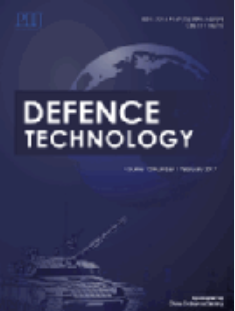Performance of multi-layer steel fiber-reinforced mortar panels with air gaps against high-velocity bullets and successive firing
IF 5.9
Q1 ENGINEERING, MULTIDISCIPLINARY
引用次数: 0
Abstract
This research addresses the growing demand for high-performance protective materials against high-velocity projectile impacts. The performance of multi-layered steel fiber-reinforced mortar (SFRM) panels with varying thicknesses and air gaps, was experimentally investigated under single and repeated impacts of 7.62×51 mm bullets fired from a distance of 50 m. The impact events were recorded using a high-speed camera at 40000 fps. Panel performance was assessed in terms of failure modes, kinetic energy absorption, spalling diameter, and percentage of back-face damage area, and weight loss. Results showed that panel configuration significantly influenced performance. Panel P10, with 70 mm SFRM thickness and 20 mm air gaps, provided the highest resistance, dissipating 5223 J of kinetic energy and preventing back-face damage. In contrast, P7, which absorbed 4476 J, presented a back damage area percentage of 8.93% after three impacts. Weight loss analysis further confirmed durability improvements, with P10 showing only 1.53% cumulative loss compared to 3.26% in P7. The inclusion of wider air gaps enhanced energy dissipation and reduced damage. Comparison between single and repeated impacts demonstrated the sustained resistance of high-performance panels, with P10 maintaining minimal degradation across three consecutive impacts. These findings highlight the potential of multi-layer SFRM panels to enhance ballistic resistance, making them suitable for military, security, and civilian protective applications requiring long-term durability.
带气隙的多层钢纤维增强迫击炮板抗高速子弹和连续射击性能研究
该研究解决了对高速弹丸冲击高性能防护材料日益增长的需求。对不同厚度、不同气隙的多层钢纤维增强砂浆(SFRM)板在50 m距离7.62×51 mm子弹的单次和多次冲击下的性能进行了实验研究。撞击事件是用40000 fps的高速摄像机记录下来的。根据失效模式、动能吸收、剥落直径、背面损伤面积百分比和重量损失来评估面板性能。结果表明,面板配置对性能有显著影响。面板P10的SFRM厚度为70 mm,气隙为20 mm,提供了最大的阻力,耗散了5223 J的动能,防止了背面损伤。相比之下,吸收了4476 J的P7在三次撞击后的背部损伤面积百分比为8.93%。减重分析进一步证实了耐久性的改进,P10的累积减重仅为1.53%,而P7的累积减重为3.26%。更宽的气隙增强了能量耗散,减少了损伤。单次和多次撞击的比较表明,高性能面板具有持续的抗冲击性,P10在连续三次撞击中保持最小的退化。这些发现突出了多层SFRM面板在增强抗弹道性能方面的潜力,使其适用于需要长期耐用性的军事、安全和民用防护应用。
本文章由计算机程序翻译,如有差异,请以英文原文为准。
求助全文
约1分钟内获得全文
求助全文
来源期刊

Defence Technology(防务技术)
Mechanical Engineering, Control and Systems Engineering, Industrial and Manufacturing Engineering
CiteScore
8.70
自引率
0.00%
发文量
728
审稿时长
25 days
期刊介绍:
Defence Technology, a peer reviewed journal, is published monthly and aims to become the best international academic exchange platform for the research related to defence technology. It publishes original research papers having direct bearing on defence, with a balanced coverage on analytical, experimental, numerical simulation and applied investigations. It covers various disciplines of science, technology and engineering.
 求助内容:
求助内容: 应助结果提醒方式:
应助结果提醒方式:


